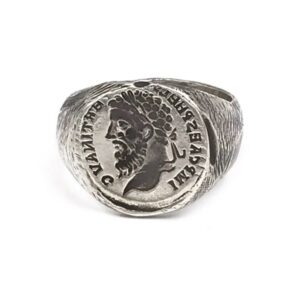Preaching About the Suffering of Christ
Preaching About the Suffering Of Christ
 “He suffered under Pontius Pilate, was crucified, dead and buried.” That’s the next phrase from the Apostles’ Creed. The next step in our series of posts on doctrine is preaching about the suffering of Christ for your congregation. There are many resources for this subject. Let’s look at some of them.
“He suffered under Pontius Pilate, was crucified, dead and buried.” That’s the next phrase from the Apostles’ Creed. The next step in our series of posts on doctrine is preaching about the suffering of Christ for your congregation. There are many resources for this subject. Let’s look at some of them.
Pontius Pilate and the Suffering of Christ
That first phrase is an interesting one. It bypasses the work of the Jewish leaders in the death of Jesus, and instead focuses on the Roman ruler of the area at the time of Jesus’ death. Pilate is an interesting character. Here are some of the things that we know about him, as summarized in the Encyclopedia Britannica.
According to the traditional account of his life, Pilate was a Roman equestrian (knight) of the Samnite clan of the Pontii (hence his name Pontius). Appointed prefect of Judaea through the intervention of Sejanus, a favorite of the Roman emperor Tiberius. (That his title was prefect is confirmed by an inscription from Caesarea in ancient Palestine.)
Protected by Sejanus, Pilate incurred the enmity of Jews in Roman-occupied Palestine by insulting their religious sensibilities, as when he hung worship images of the emperor throughout Jerusalem and had coins bearing Roman religious symbols minted. After Sejanus’s fall (31 CE), Pilate was exposed to sharper criticism from certain Jews, who may have capitalized on his vulnerability to obtain a legal death sentence on Jesus (John 19:12). The Samaritans reported Pilate to Vitellius, legate of Syria, after he attacked them on Mount Gerizim (36 CE). He was then ordered back to Rome to stand trial for cruelty and oppression, particularly on the charge that he had executed men without proper trial. According to Eusebius of Caesarea’s Ecclesiastical History, Pilate killed himself on orders from the emperor Caligula.
Pilate and the Crucifixion
The Scripture is clear that Jesus died because Pilate allowed a crucifixion. The gospels picture him as a vacillating ruler, wanting to release Jesus, but bowing to the Jewish rulers. Part of that choice may have been because of the threat that if he did not crucify Jesus, he would not be a friend of Caesar, as recorded in John 19:12:

Friend of Caesar ring
From then on, Pilate tried to set Jesus free, but the Jewish leaders kept shouting, “If you let this man go, you are no friend of Caesar. Anyone who claims to be a king opposes Caesar.”
The threat here is to report him to Caesar as someone who was not a “friend”, an official designation in that time.
Resources for Preaching About the Suffering of Christ
Isaiah 53 is a powerful prophetic statement to use as the basis of a sermon or to use as a reading in your service. The Prophet accurately foresaw the horror of the crucifixion.
The gospel accounts, though, are powerful. Read this description of the flogging of Jesus, and your people will appreciate anew the amazing love of Christ for them.
(Commenting on Mark 15:15) The Romans first stripped the victim and tied his hands to a post above his head. The whip (flagellum) was made of several pieces of leather with pieces of bone and lead embedded near the ends. Two men, one on each side of the victim, usually did the flogging. The Jews mercifully limited flogging to a maximum of forty stripes; the Romans had no such limitation. The following is a medical doctor’s description of the physical effects of flogging.
The heavy whip is brought down with full force again and again across Jesus’ shoulders, back, and legs. At first the heavy thongs cut through the skin only. Then, as the blows continue, they cut deeper in the subcutaneous tissues, producing first and oozing of blood from the capillaries and veins of the skin, and finally spurting arterial bleeding from vessels in the underlying muscles… Finally the skin of the back is hanging in long ribbons and the entire area is an unrecognizable mass of torn, bleeding tissue. (C. Truman Davis, “The Crucifixion of Jesus. The Passion of Christ from a Medical Point of View,” Arizona Medicine 22, no. 3 [March 1965]: 185)
Conclusion
The suffering of Christ on our behalf is the center of the Christian faith. Preach it well.



